Separation of confusion pairs: Eleocharis …
palustris versus multicaulis
Separation
Multicaulis is a rather squatter, usually obviously tufted, plant (though where abundant, plants can coalesce into patches). Palustris makes patches and often large sheets.
These topics (below) are covered. Select a button to go straight down to a topic, or scroll down.
Use the linked "⇑" up-arrows with each topic header to get back here, or use the ‘^’ button which appears in the lower-right corner when you're further down the page.
Links to all pages are at the bottom of the page (wider screens only).
➢ as stated above, multicaulis is tufted; palustris has a strongly creeping rhizome and soon creates large patches
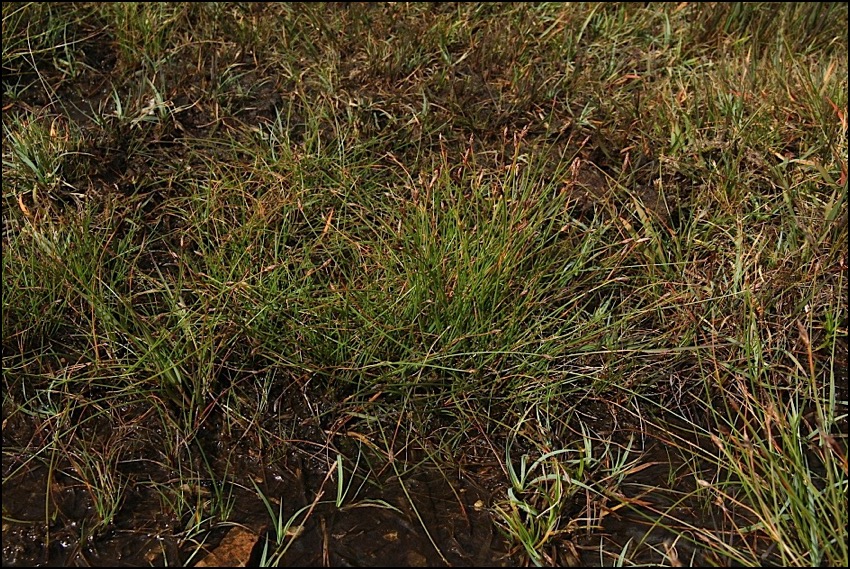
multicaulis - ‘sprawling’ tufted plant in open gravelly runnel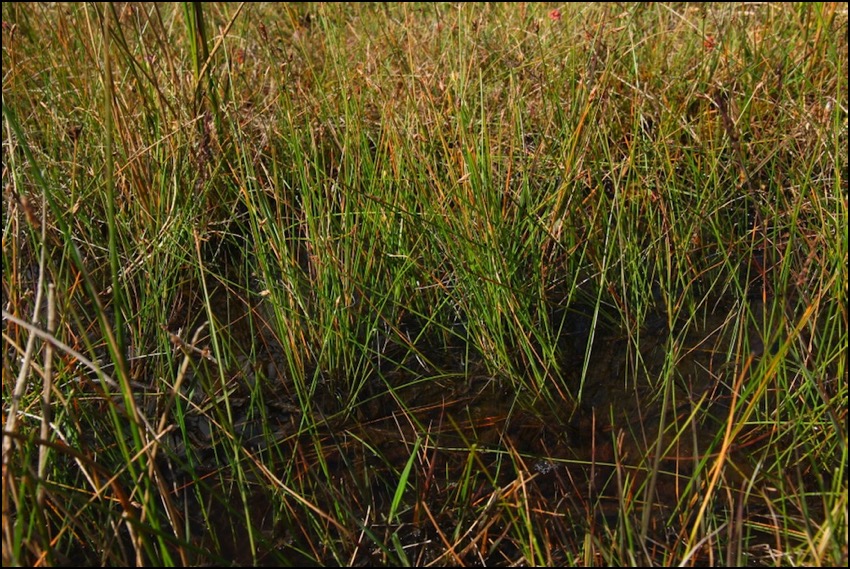
tufted plants of multicaulis in small pool in basin mire
Basal glumes ⇑
➢ in palustris, the two basal glumes are sterile (so enclose no flowers or fruit), similar in size, short, and typically each encloses just half the spikelet-base with no overlap
➢ in multicaulis only the one basal glume is sterile, and this largely encircles the base of the spikelet
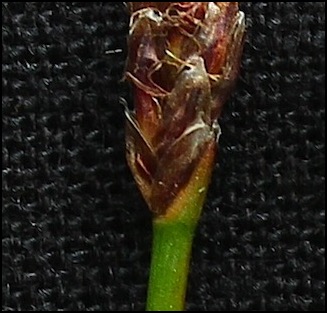
multicaulis: +/-encircling basal glume often notched at its rounded apex
Spikelet shape ⇑
➢ typically, palustris has symmetrical heads, but of many shapes from cigar-shaped to lanceolate, shorter ovoid or even somewhat conical
➢ in multicaulis there is a much more restricted range of shapes, ovoid-ellptic or ovoid-lanceolate
➢ multicaulis is often proliferous - an instant confirmation, since this is the only spike-rush to show this feature
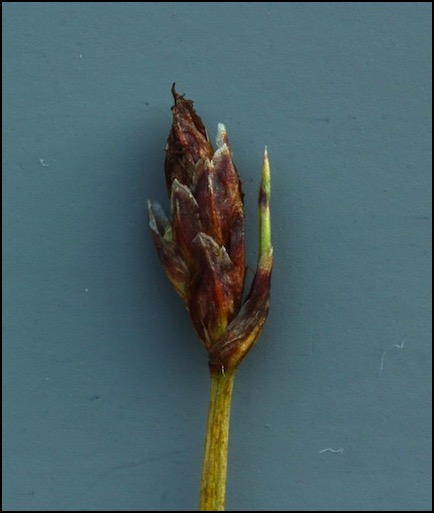
multicaulis: a proliferating flower
Style-base (stylopodium) ⇑
➢ style-base in palustris is strongly and obviously swollen. (Photo below shows nut with four shorter bristles with the minute rearwards pointing hooks, and three long, broad filaments.)
➢ style-base in multicaulis narrows rapidly from a wide base, generally an equilateral triangle in outline. There is a clear constriction at its junction with the nut.
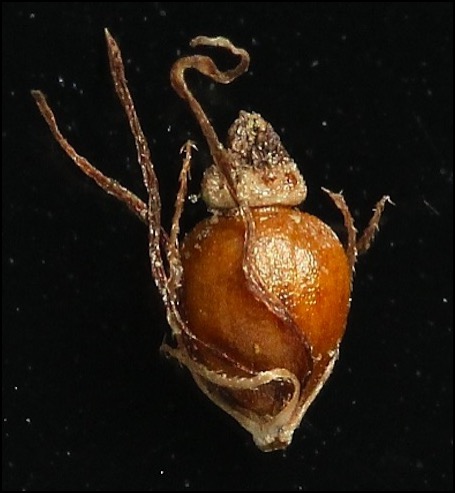
palustris
multicaulis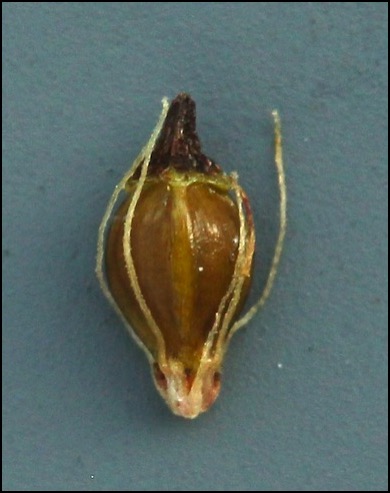
Perianth bristles ⇑
➢ in palustris there are almost always four bristles, variable in length, but roughly the same length as the nut
➢ in multicaulis, there are 4-6 bristles, and these are generally a similar length to palustris (see pictures above)
Basal sheath ⇑
➢ the sheath-apex in multicaulis is obliquely truncate, hence producing a +/- acute point. In palustris the apex is about transversely truncate
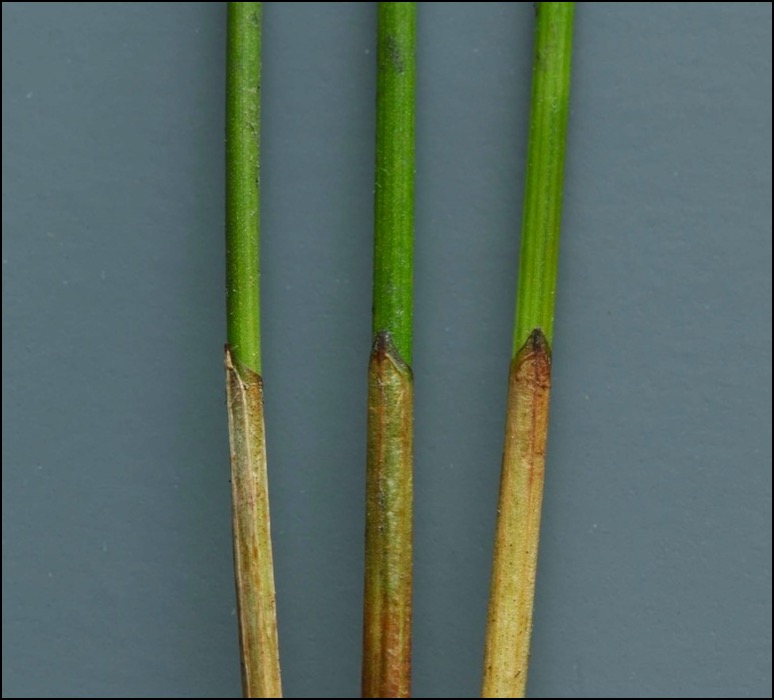
multicaulis: sheath-apex obliquely truncate, making a +/- acute point
Stem ⇑
➢ multicaulis can match palustris at times in stem width, though often rather narrower, but stems are normally shorter
Stem section ⇑
➢ layers of green tissue are considerably deeper in multicaulis than in palustris and the central hollow correspondingly narrower
➢ there are abundant fibre-bundles, more frequent that in palustris
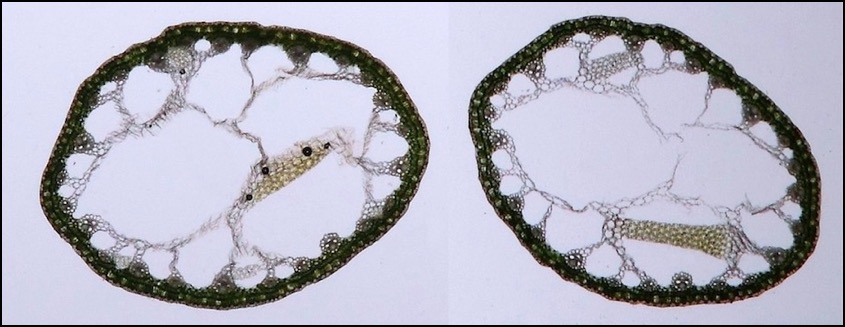
stem sections: palustris (above); multicaulis (below)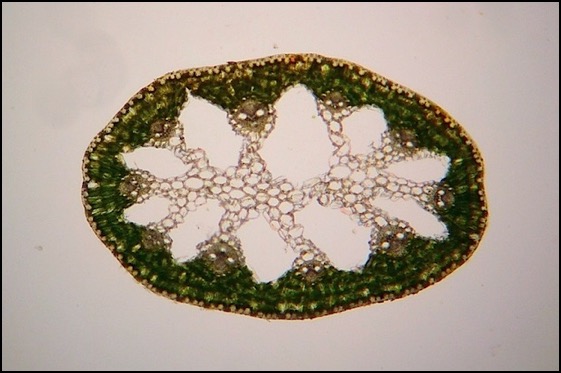
Epidermal peel ⇑
➢ compared with palustris, multicaulis has fibre-bundles more abundant, giving the impression of ‘sheets’; the runs of ‘ordinary’ cells are narrower, the rows carrying stomata in ‘single file’ flanked by single rows of much narrower cells.
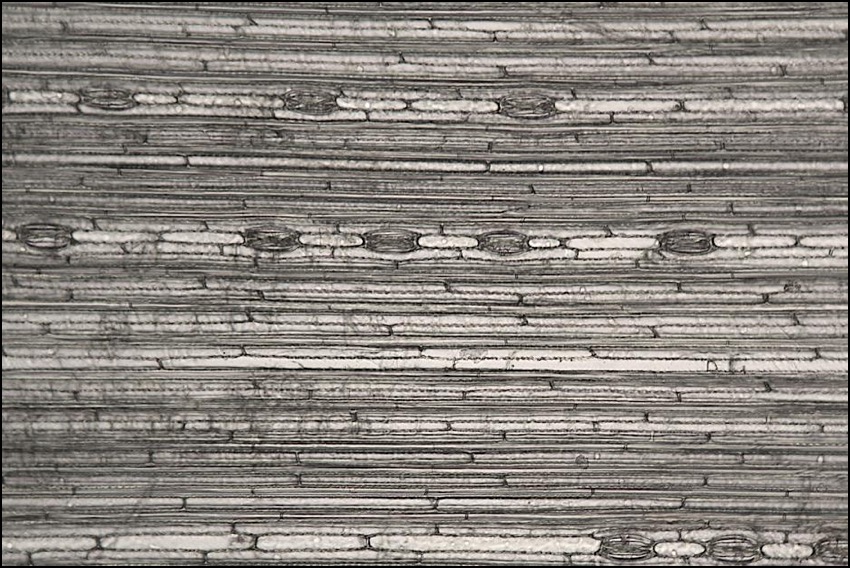
epidermal peels: palustris (above); multicaulis (below), same scale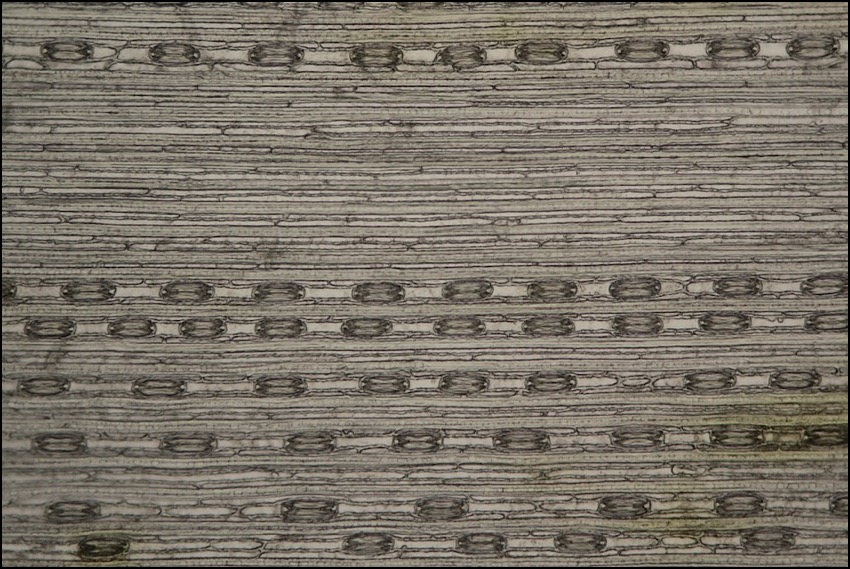
Links to the other Eleocharis spike-rush pages (also accessible from the sidebar)
Species pages
Separation of similar pairs
Other information
